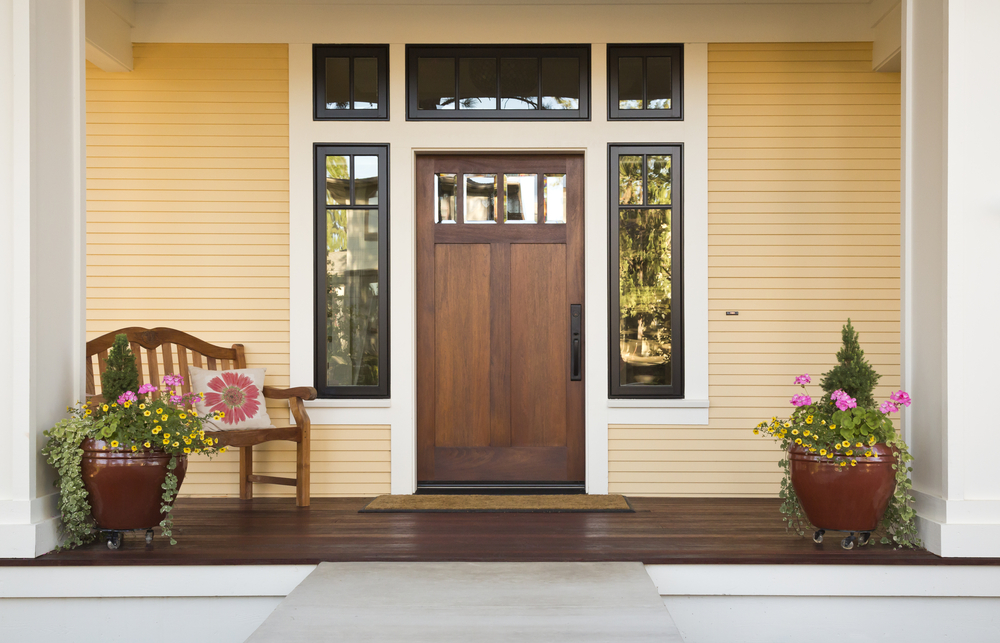
The visitable entrance provides ample room to approach and enter the home without restrictions or barriers (except for the non-lever handle), and there is the added benefit of a welcome bench to the left
Everyone experiences some mobility issues throughout their lives. Some are relatively minor and come and go. Some are a little more chronic. Some affect the way people get around to the point of them requiring a mobility aid of some type.
The point is that our abilities are subject to change over the course of our lifetimes. Disabilities, when they occur, may be little more than a nuisance that we deal with for a few days or weeks. It might be a little more serious, but not long-term, and we learn to compensate for our inability to still do relatively as much as we were prior to the injury.
Let’s make sure that we understand that mobility consists of so much more than just walking or stepping. While movement of the hip, knee, and ankle joints factor into mobility quite prominently, mobility means the movement of any joint, tendon, or ligament – from our neck to our toes. As any movement becomes restricted, difficult, or sore, we experience a mobility limitation.
In some cases, people have a limitation that they are born with or one that has resulted from a traumatic injury or a progressive illness of some type. Here, they may be using a walker, cane, wheelchair, crutches, braces, or other assistive devices to help navigate their world.
Mobility issues can result from muscle strains and sprains, from a tear in a muscle or ligament or tendon, from a bone break, from a dislocation, from overuse of certain muscles or joints, from disease, from a traumatic injury, or just from aging. They can be related to sensory changes as well.
Therefore, it is highly unlikely if not impossible for someone to go through life without experiencing a few minor episodes of mobility limitations. It could be as simple as a stiff neck or a turned ankle. When these minor issues arise, we deal with them. Sometimes we medicate to take away the pain and reduce any inflammation. Sometimes we rest the affected area and try to do an activity that does not require the use of that part of our body. Sometimes we suffer through knowing that it is just for a brief period of time. Sometimes, we make allowances and determine another way to do what it is that we are attempting.
Since we never know how life is going to unfold – even if we consider ourselves to be quite healthy and free of any physical limitations for the moment – we need to be prepared for such eventualities. This can be done quite easily with visitable design in our homes.
Additionally, we won’t necessarily know in advance what someone might be experiencing that is coming to our home after having been invited by us or just to call upon us so we need to have the approach, entrance, and floor areas of our homes accessible to anyone.
An entrance walkway, driveway, and approach (steps, porch, stoop, or landing) needs to accommodate the mobility (physical) needs of anyone who might come to our door. This cannot be done as they are walking up to the door. Obviously, it needs to be done in advance.
Accommodating people who are going to be visiting us – since we never know who all those people who are going to be coming or what their physical needs might be as well – is a high priority on having a home that is safe and comfortable for people to enter and use. Even if we are less concerned about ourselves and other occupants of our home, looking out for those coming to us is a major priority.,
Of course, as we look out for those coming to see us and provide for the mobility issues they might be experiencing – never knowing the extent of those concerns except for regular visitors like relatives or neighbors – we also will be providing for ourselves and the other residing with us.
Just as we never know what everyone who visits us (by invitation or just stopping by unannounced) will be experiencing, live can through us some curves as well – from sprains, strains, broken bones, and illnesses or other events (such as arthritis, multiple sclerosis, dementia, diabetes, or a stroke).
Since there is no way to tell what the future holds for us and our family members, using visitable design is a solid way to approach aging in place concerns. It won’t matter whether someone who is in good health and ability now might retain that ability that long-term (or how or if it might change), or whether there are current or future issues to deal with that affect how someone uses our home and gets around in it. Flooring, doorways, switches and controls, appliances, cabinets, plumbing fixtures, windows, and stairs or steps are just some of the many issues where someone might experience challenges unless we begin to look at such areas now and begin modifying them to accommodate our potentially changing needs and those of people from the outside who might visit us.
Of course, in discussing our own homes, we really are extending this to the marketplace and the homes, needs, and experiences or our current clients and others we might serve in the future.
